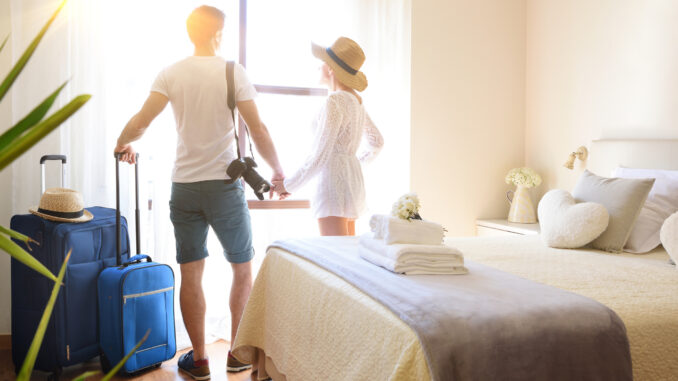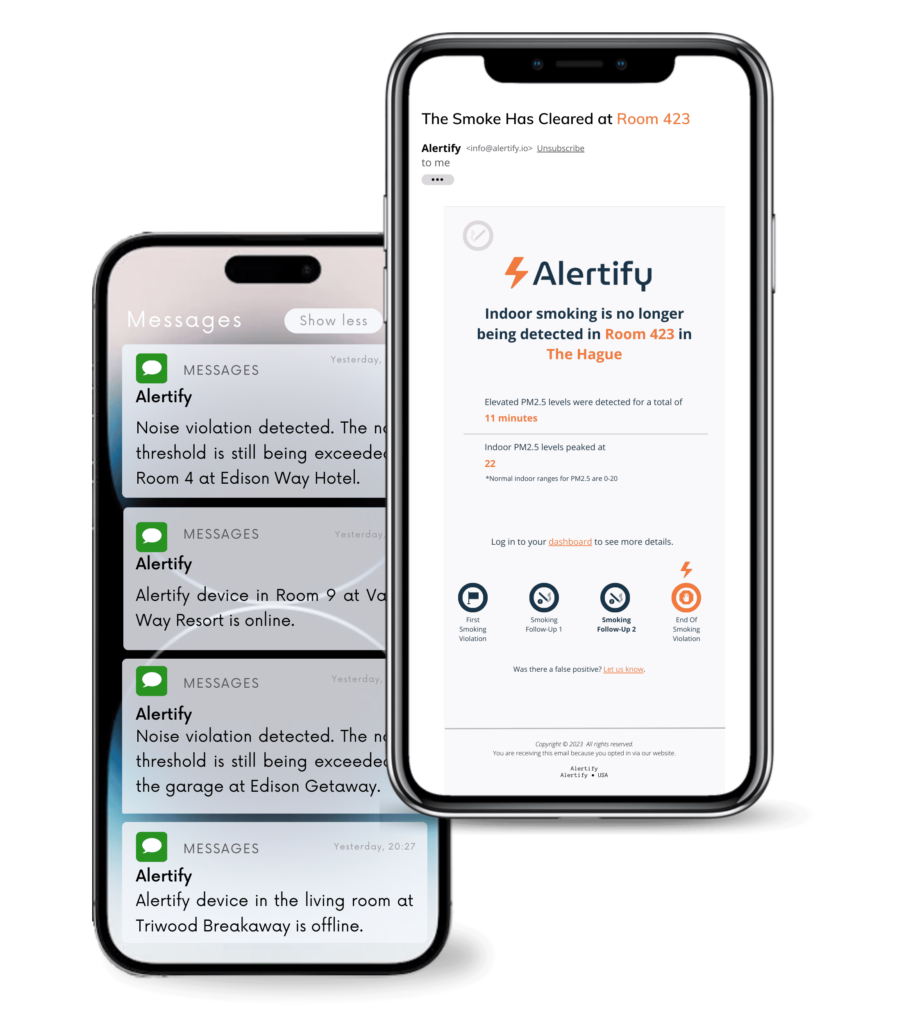
By Larry and Adam Mogelonsky - 8.24.2023
One of our grand theories for the hotel industry going forward is that wellness programming will continue to rise in importance as a profit center, giving a strong ‘reason to visit’ (and revisit) to help differentiate any brand in any hotel category. That said, nothing comes easy.
The foremost obstacles that we’ve experienced when building out or expanding a hotel’s wellness footprint are skilled labor access and marketing awareness. For the first, the future of wellness will require ever-increasing technical expertise, thereby reducing the labor pool or necessitating more reskilling or certifications. On the second front, whatever wellness experiences you set up are only as good as your ability to promote then frictionlessly sell them.
Technology can be the savior for both; the guest-facing or staff-facing wellness programming is the wheel, while the technology is the axle that underpins and cost-efficiently drives it all.
Dispelling the Wellness Skeptics
Wellness is no longer just for luxury resorts catering to HWNI guests. Any hotel can play, but it’s a matter of picking your targets. Before you get into the weeds of what direction to steer the ship, a hotel brand first needs to have a wellness-oriented mindset, requiring a cultural shift.
To help quell any doubts about the potential here, let’s look at seven big-picture factors that reveal why we are only just now entering the elbow of the curve for this space.
- In the wake of pandemic lockdowns, the heightened awareness of at-home wellness has become a lasting trend. In other words, the pandemic threw us off the proverbial hamster wheel and now there’s no going back.
- The shift towards remote work has reshaped priorities, emphasizing the importance of work-life balance. This shift presents an opportunity for hotels to provide tailored solutions, such as more ergonomic workspaces, better access to sunlit areas for breaks and more flexible spa options.
- The rapid advancement and mainstream acceptance of medical research on longevity and aging have brought forth a wave of skilled professionals, including clinicians and dietitians, entering the wellness sector. The more research we have on the matter, the more treatments and products that will inevitably emerge and the more consumer adoption that will transpire.
- The aging baby boomer generation represents a prime demographic for wellness offerings and medical tourism, taking advantage of this wealthy cohort’s yearning to live healthier and longer in order to keep experiencing the innumerous beauties of the world.
- Younger generations, namely Gen Y and Z (and soon Alpha), are adopting healthier lifestyles by shunning habits like excessive drinking, smoking, refined sugar and fried foods, and they continue to want ever-healthier options on the menu.
- Corporations are recognizing the significance of employee well-being and mental health. This corporate emphasis on wellness creates a ripe environment for hotels to establish themselves as venues for business retreats and conferences, emphasizing wellness-oriented amenities and programming to cater to companies’ evolving needs for employee retention.
- The synergy between increasing supply and demand in the wellness industry results in more accessible pricing for wellness products and services. This affordability factor acts as a self-reinforcing mechanism, driving further awareness and demand as more individuals can engage with wellness offerings, leading to a virtuous cycle of growth within the market.
What Can Wellness Be?
So, it’s a matter of picking your targets. Therein lies the next problem – shopper’s paralysis. From the ambiguity of the term ‘wellness’ a hotel must choose from:
- Health-conscious cuisine, herbal teas and antiaging supplements
- Traditional spa treatments like massage, facials or acupuncture
- On-demand, in-room fitness or stretching programming
- Guestroom sleep programs with circadian lighting and smart beds or pillows
- Devices (e.g., Alertify) that monitor for excessive noise, indoor smoking, and other conditions that interfere with guest relaxation
- Yoga, meditation or breathwork classes and other forms of group mindfulness
- Guided intermittent fasting regimens and water or juice detoxing
- Contrast therapy with saunas, hot tubs, ice baths, cryotubes or hyperbaric chambers
- Forest bathing, self-guided hikes and all manner of exploring the great outdoors
- Light and sound therapy involving near-infrared exposure or sensory deprivation tanks
- Cacao ceremonies and using borderline-legal psychedelics like psilocybin or ayahuasca
- Physiotherapy and other one-on-one functional restoration sessions
- Educational experiences like culinary or aromatherapy classes
- Genome analysis with one-on-one nutritional and chronotype advice
- Onsite counseling for blood work, epigenetic testing or microbiome analysis
And there’s plenty more not on this list. Narrowing the field and devising the theme require hours upon hours of collaborative work, and that’s where our consultancy comes in – selecting the best options for near-term and long-term growth.
Four Ways Tech Helps Wellness

For now, let’s leave the wheel aside and look at the axle. With the first step being a cultural shift towards adopting a mission to make wellness a part of the brand DNA, the next step might be aligning your core systems so that any wellness-oriented rollout doesn’t overload your onsite teams and can be marketed effectively for actual revenues, not just in-name-only puffery.
Here are four key areas of technology to focus on for oiling that axle.
Data-Rich Guest Profiles
The key to shaping future services, amenities, and programs lies in consolidating disjoined guest data. It comes down to a root-canal-esque task of integrating the PMS, CRS, CRM and BI systems, often necessitating a customer data platform (CDP) or robotic processing automation (RPA) to help pipe then structure the data into one unified system.
The grand objective here is to gain a more precise understanding of high-spending guest segments and emerging trends to guide wellness programming rollouts and marketing to return guests. As a very simple example, by establishing a robust connection between the restaurant’s POS and the PMS, you can not only identify the proportion of hotel guests who dined at your restaurant but also pinpoint those who opted for healthier menu selections, thereby informing what to advertise in a newsletter. Monitoring shifts in this data can also inform menu expansion strategies and packaging innovations.
Time-Based Inventory Yielding
A spa or gym or cabana is just selling space over time. But that ‘fragile inventory’ can be yielded through what’s known as ‘dynamic availability’. Whether it’s yoga sessions, guided meditation or personalized physiotherapy consultations, streamlining practitioner schedules according to where demand peaks can be done by the best-in-breed platform providers. Here, again, integrated systems are crucial to see where the demand is happening but also to facilitate online bookings so that receptionists aren’t overwhelmed with manual work.
Dynamic availability involves utilizing intelligent tools to recommend optimal days and times for specific treatments or classes so that profit-per-hour-per-space is optimized. The goal is two-fold: strategically allocate high-value services during primetime slots, and then make informed decisions about when guests are most likely to engage with these offerings.
Prearrival Cross-Selling
While foundational factors like location, rates, availability, distribution and promotional deals will remain crucial for driving bookings, many guests only really book ancillary spend in the hours, days or weeks preceding arrival. Considering this guest context, how can your incoming guests be informed about available services precisely when they are most inclined to make a purchase?
Deploying upselling platforms such as well-timed prearrival emails and automated guest communication tools capable of sending notifications via SMS or messaging apps can ensure that guests encounter your upselling offers through their preferred communication channels. Furthermore, experimentation within these platforms will provide insights to refine your approach, yielding valuable data on the conversion journey. What day before the arrival date (3, 4 or 7, for instance) garners the highest clickthrough rates for the cross-selling email? Which communication channel, be it email or WhatsApp, exhibits the greatest success in driving conversions for additional service purchases?
Mapping the Transformation
To you leave, know that guests seek inspiration from their chosen hotels to facilitate personal transformations in their home habits after departure. This inherent desire for self-actualization provides an opportunity to introduce services and amenities that can be either upsold or seamlessly integrated into the nightly rate, thereby bolstering ADR growth over the long-term by giving a strong reason for keep coming back to the property or the other hotels in the branded group.
For a tech-driven embodiment, envision tailored in-room exercise programs that sync with custom classes via an interactive TV. You might contemplate constructing a novel wellness hub featuring amenities like an infrared sauna and ice plunge tank, which involves substantial capex and staffing commitments to ensure safety. Alternatively, a more streamlined approach could involve an integrated breathwork module within your hotel app, synced with an in-room IoT device to keep guests aligned with their ongoing wellness goals.
Finally, to delve into the burgeoning mindfulness domain, an array of guided meditation apps are readily available, helping make hotels a place for cognitive introspection, mental revitalization and ‘digital detoxing’. On the wilder side, sensory deprivation tanks and sound therapy chambers, though more investment-intensive, are emerging as technologically advanced alternatives gaining traction in the mainstream wellness sphere.

Together, Adam and Larry Mogelonsky represent one of the world’s most published writing teams in hospitality, with over a decade’s worth of material online. As the partners of Hotel Mogel Consulting Limited, a Toronto-based consulting practice, Larry focuses on asset management, sales and operations while Adam specializes in hotel technology and marketing. Their experience encompasses properties around the world, both branded and independent, and ranging from luxury and boutique to select-service. Their work includes seven books: “In Vino Veritas: A Guide for Hoteliers and Restaurateurs to Sell More Wine” (2022), “More Hotel Mogel” (2020), “The Hotel Mogel” (2018), “The Llama is Inn” (2017), “Hotel Llama” (2015), “Llamas Rule” (2013) and “Are You an Ostrich or a Llama?” (2012). You can reach Larry at larry@hotelmogel.com or Adam at adam@hotelmogel.com to discuss hotel business challenges or to book speaking engagements.
